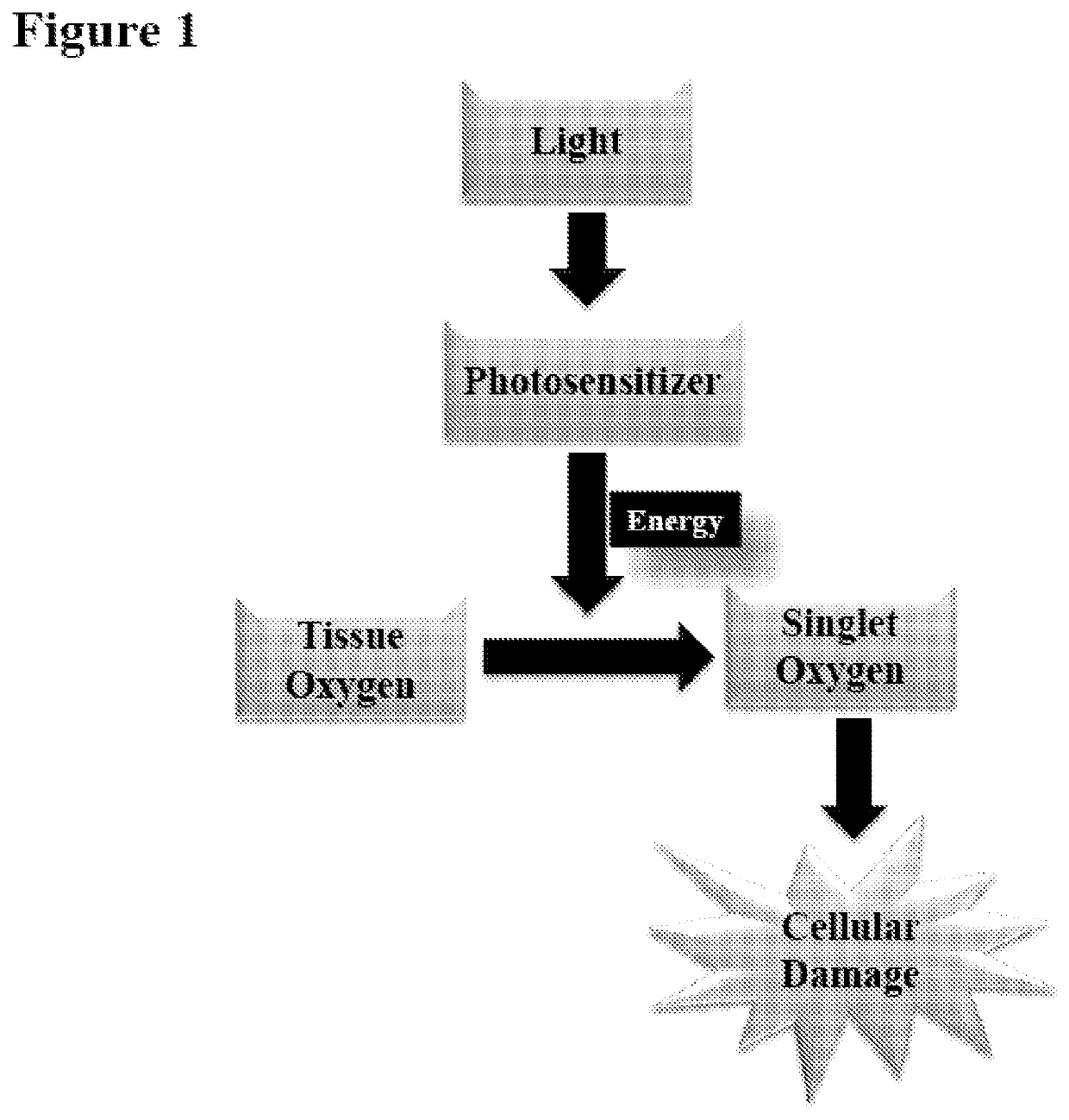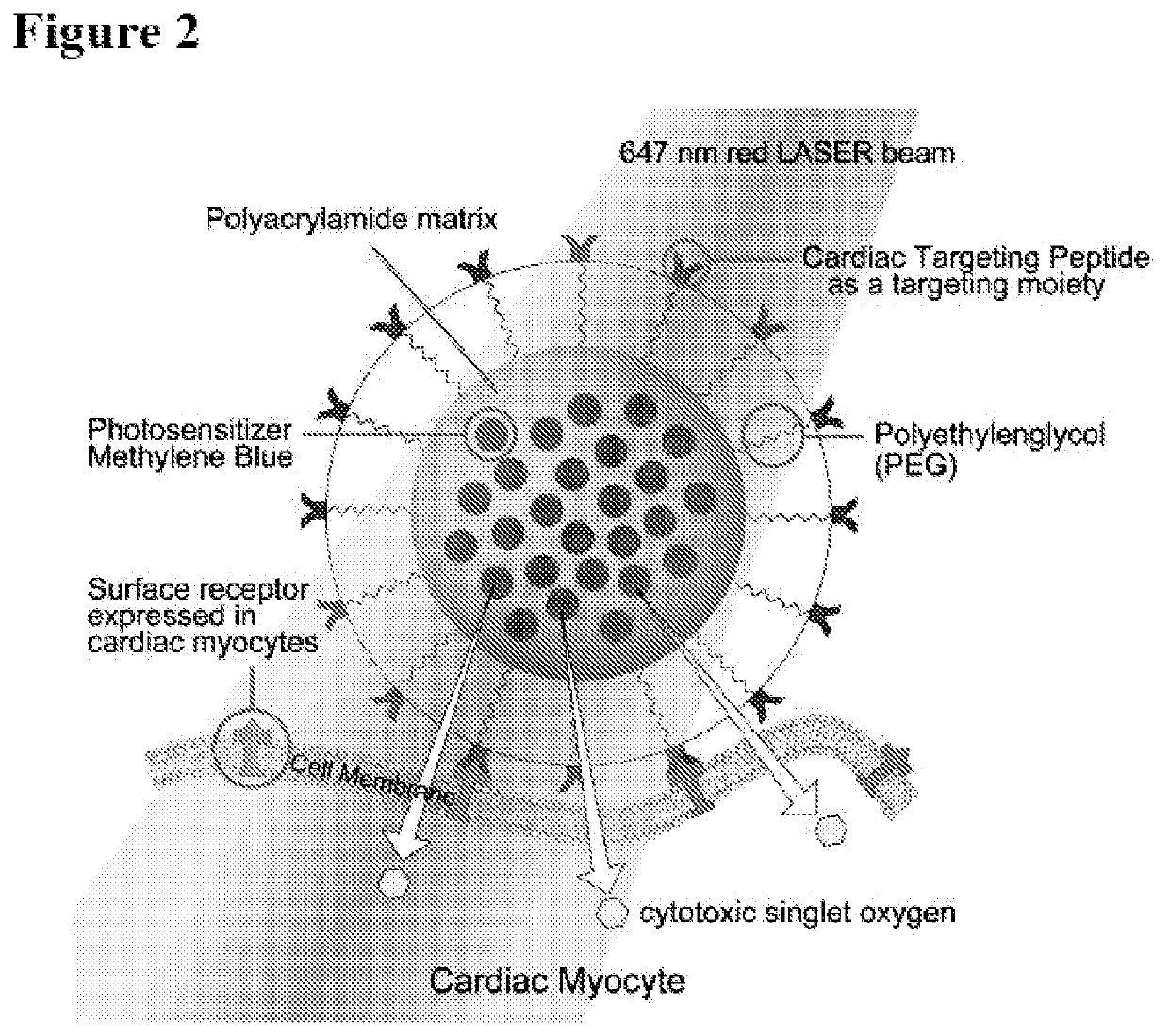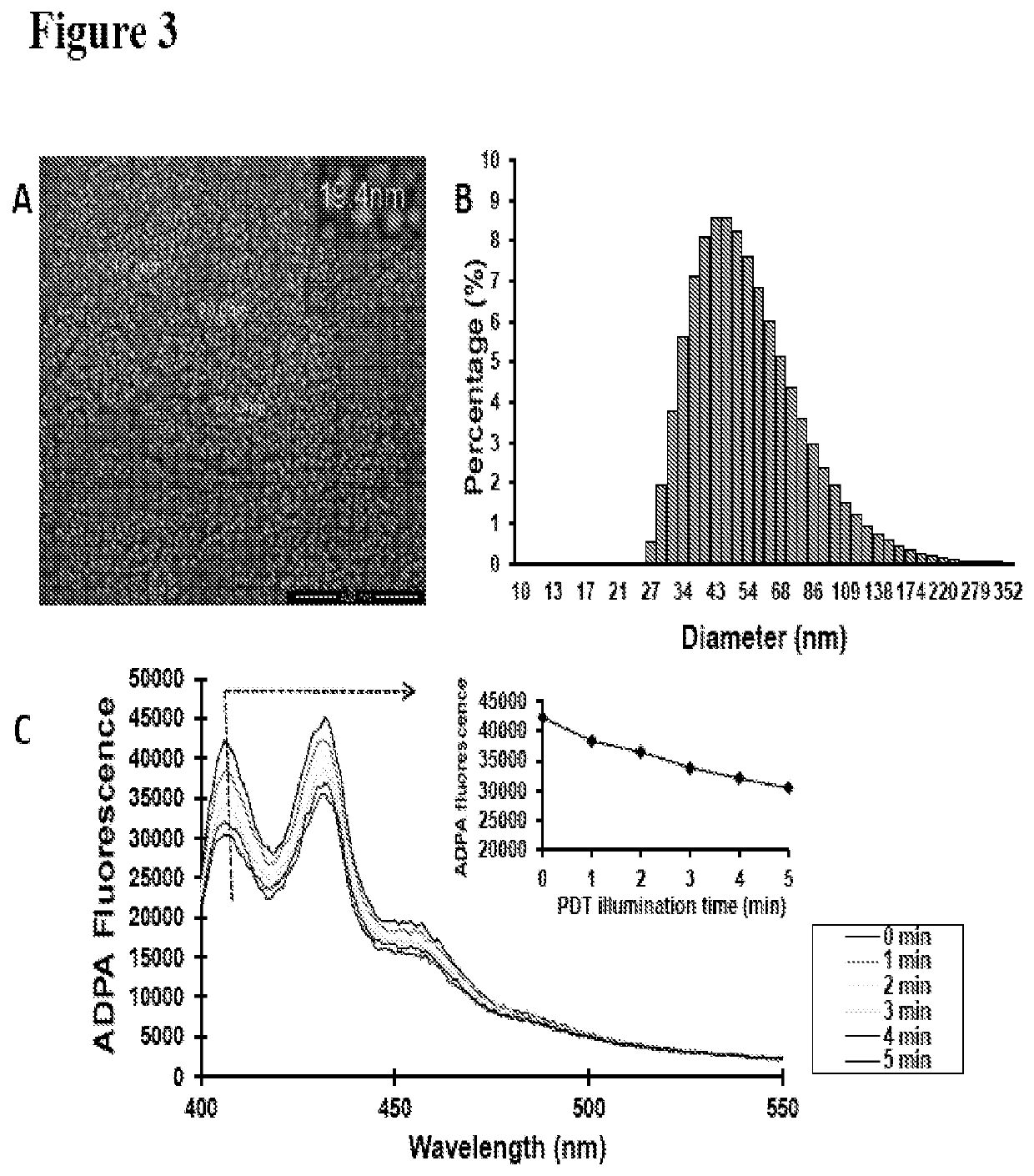Systems and methods for targeted imaging and ablation of cardiac cells
a targeted imaging and ablation technology, applied in the field of nanoparticles, can solve the problems of increasing the required energy amount, prolonging the procedure time, severely limited ablation techniques, etc., and achieve the effect of reducing or eliminating signs or symptoms
- Summary
- Abstract
- Description
- Claims
- Application Information
AI Technical Summary
Benefits of technology
Problems solved by technology
Method used
Image
Examples
example 1
Methods
[0095]Synthesis of Methylene Blue (MB) incorporated polyacrylamide (PAA) nanoparticles and Characterization has been done as detailed previously (Hah et al., Macromolecular bioscience 2011). CTP has the sequence APWHLSSQYSRT to which cysteine (C) was added to the end while synthesizing in order to conjugate with MB PAA NPs. Its phototoxic capability is determined as previously reported (Hah et al., supra).
Extraction of Primary Cardiac Myocytes and Fibroblasts and Co-Culture:
[0096]Adult rat ventricular myocytes and fibroblasts were isolated as detailed previously (Vaidyanathan et al., Journal of Biological Chemistry 2010; 285:28000-28009; Gustafsson et al., Mol Pharmacol December 2000; 58:1470-1478. All animal experiments were approved by the Unit for Animal Laboratory Medicine (ULAM) of the University of Michigan.
In Vitro PDT with Non-Targeted MB PAA NPs for PDT Susceptibility and in Vitro PDT with CTP Conjugated MB PAA NPs for Cell Type Specific Therapeutic Efficacy:
[0097]No...
example 2
In Vivo Experiments
[0104]In vivo experiments are done to test myocyte specific PDT. Langendorff-perfused rat hearts are used to compare myocyte-specific ablation with non-specific ablation. Using optical mapping techniques, basic electrophysiological parameters (APD and impulse velocity) and re-entry dynamics before and after ablation are deternubed. It is contemplated that conjugating CTP to PDT-NPs obtains myocyte-specific ablation in Langendorff-perfused rat hearts and that non-ablated regions retain their baseline electrophysiological properties while they are fully insulated from the ablated region.
[0105]Preparation of Langendorff-perfused rat hearts: After anesthesia, rat hearts are removed and Langendorff-perfused with an oxygenated Krebs-Henseleit solution as previously (Ford et al., British journal of pharmacology. 2002; 135:1191-1198) and within a 150 ml closed-loop recirculation system.
Cardiac targeting peptide (CTP) synthesis: The published sequence of CTP, APWHLSSQYSRT ...
example 3
In Vivo Demonstration of the Ability of Targeted Nanoplatforms to Cross Blood Vessel Endothelial Lining
[0123]One of the major hurdles to successfully deliver nanoplatforms to any tissue type is to succeed in crossing the endothelial cell layer which separates blood vessels from surrounding structures. Previously, nanoplatforms were mostly designed for cancer tissue in which the endothelial lining is vastly different from the one present in cardiac tissue.
[0124]The platform comprises polyacrylamide (PAA) nanoparticles conjugated with a photosensitizer, methylene blue (MB)—or alternatively Rhodamine (Rh), a fluorescent probe- and a cardiac targeting peptide (CTP).
[0125]In vivo CTP-MB-PAA testing started with injecting CTP-Rh-PAA NPs into the rat tail vein to subsequently collect heart tissue at either 1 or 3 hours post-injection. Confocal microscopy demonstrated that MB-PAA-CTP nanoplatforms remained in blood vessels and were not found in the cardiac cells (left panel of FIG. 8). Afte...
PUM
| Property | Measurement | Unit |
|---|---|---|
| size | aaaaa | aaaaa |
| sizes | aaaaa | aaaaa |
| sizes | aaaaa | aaaaa |
Abstract
Description
Claims
Application Information
 Login to View More
Login to View More - R&D
- Intellectual Property
- Life Sciences
- Materials
- Tech Scout
- Unparalleled Data Quality
- Higher Quality Content
- 60% Fewer Hallucinations
Browse by: Latest US Patents, China's latest patents, Technical Efficacy Thesaurus, Application Domain, Technology Topic, Popular Technical Reports.
© 2025 PatSnap. All rights reserved.Legal|Privacy policy|Modern Slavery Act Transparency Statement|Sitemap|About US| Contact US: help@patsnap.com



